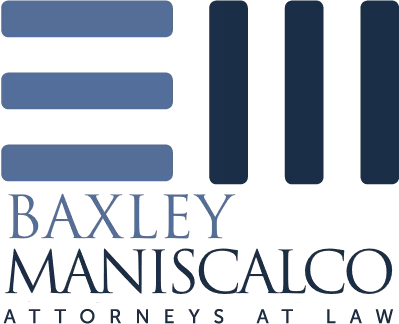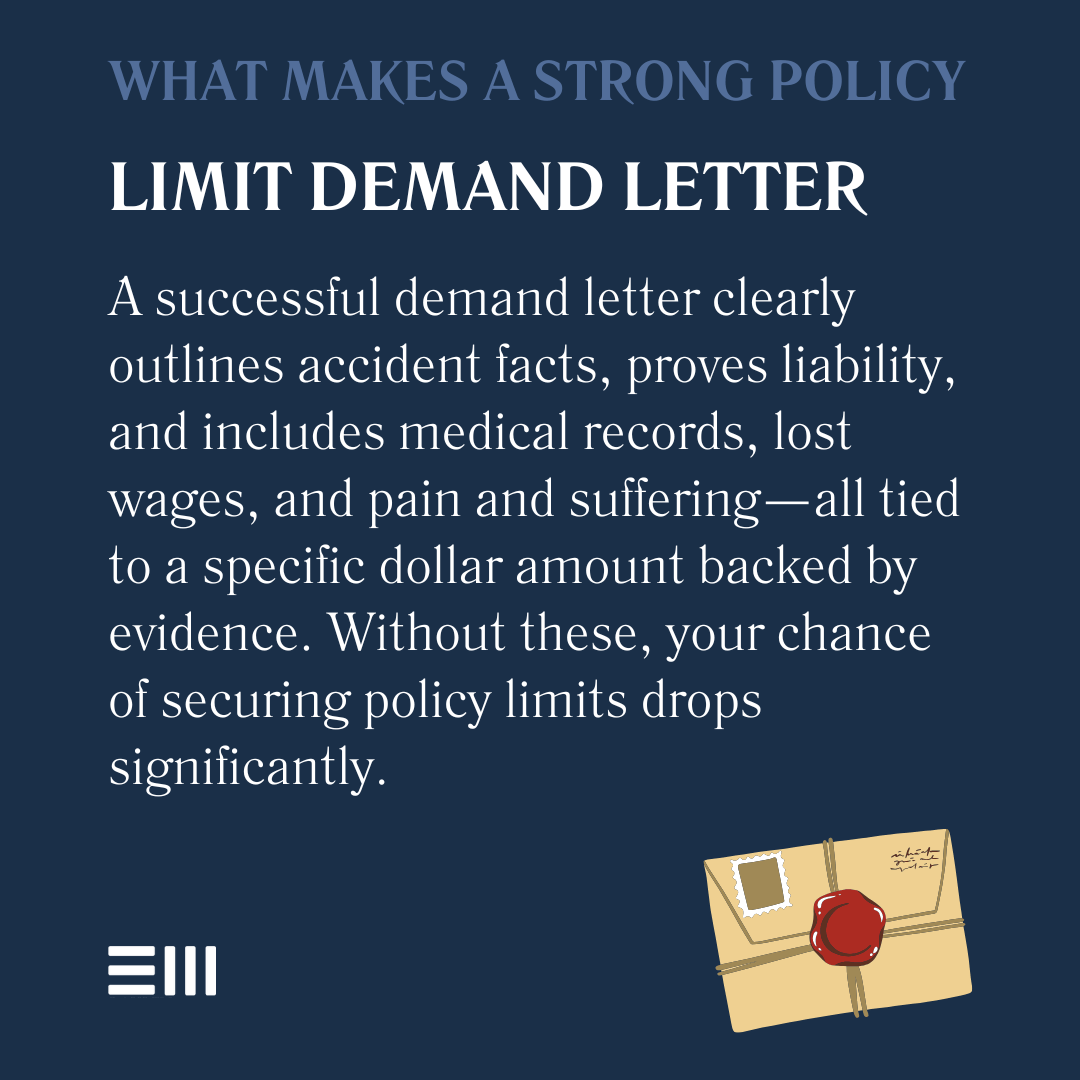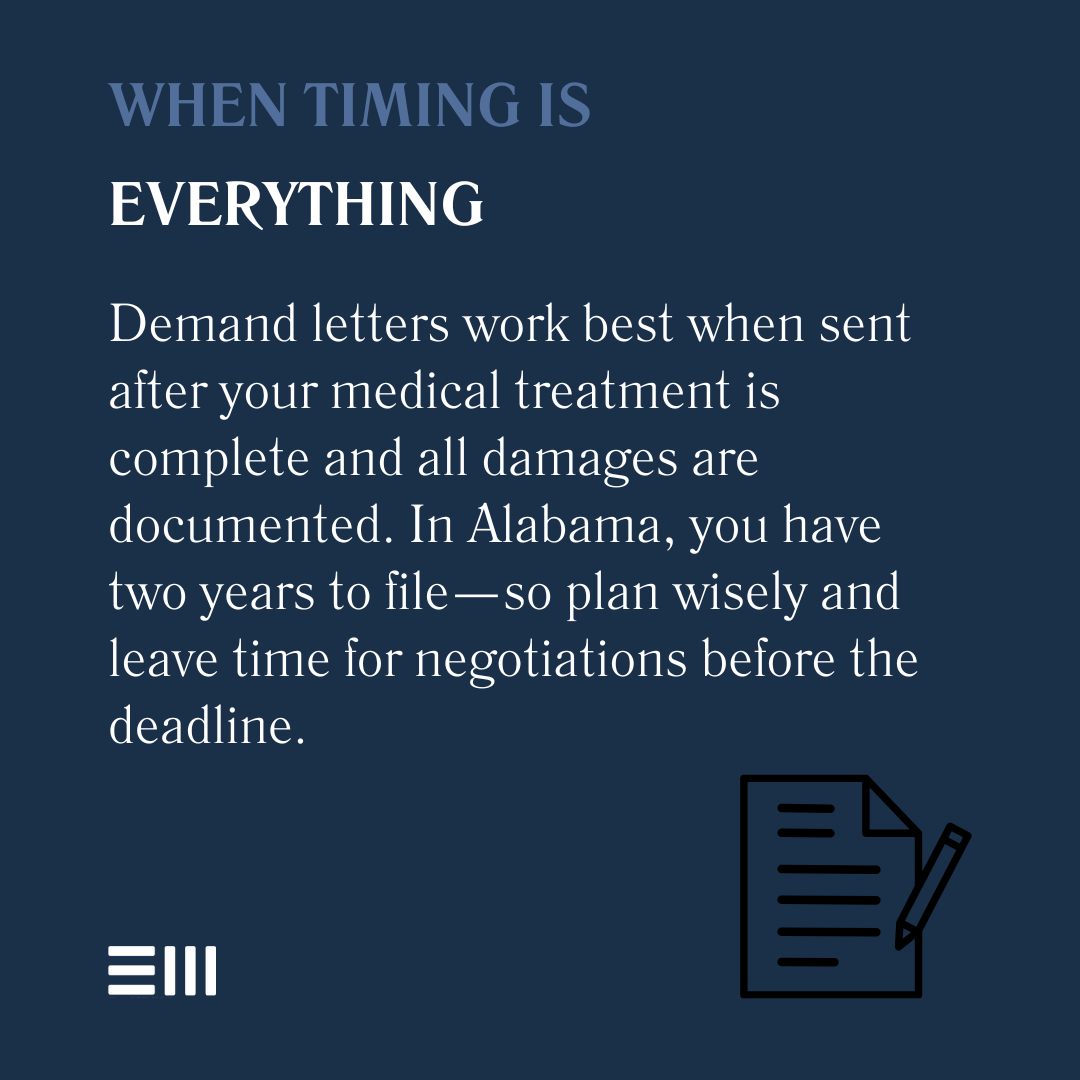Insurance negotiations often hinge on a single document that can make or break your injury claim.
The policy limit demand letter stands as the gateway between accident victims and fair compensation, serving as your formal request for the maximum amount available under the at-fault party's insurance coverage.
Many Alabama residents find themselves navigating this complex process without understanding how it dramatically impacts their recovery potential.
Understanding Policy Limits in Personal Injury Claims
Insurance policies establish specific monetary caps on what insurers will pay for injuries. These caps, known as policy limits, represent the maximum amount available to compensate victims. Alabama requires minimum liability coverage for bodily injury, though many drivers carry additional coverage.
The demand letter serves as your formal request for compensation up to these policy limits. It establishes the foundation for negotiations with insurance companies and can significantly impact the outcome of your personal injury claim.
A well-constructed letter presents compelling evidence and legal arguments that support receiving maximum compensation.
Key Elements of an Effective Policy Limit Demand Letter
Creating a powerful demand letter requires attention to several critical components that build your case for maximum compensation within available policy limits.
Your letter should include:
- A concise accident description including date, time, location, and sequence of events;
- Clear liability arguments supported by evidence and relevant Alabama laws;
- Documentation of all damages (medical records, bills, lost wages);
- Descriptions of non-economic damages like pain and suffering;
- A specific demand for the policy limits with supporting justification; and
- A reasonable deadline for response.
These elements work together to present a compelling case that justifies maximum compensation. Without these key components, your demand may fail to secure the full policy limits available for your injuries.
Common Mistakes to Avoid in Policy Limit Demands
Many claimants undermine their chances of securing policy limits by making preventable errors that insurance companies readily exploit.
Common mistakes include:
- Submitting insufficient documentation or relying on generalized claims;
- Using emotional language or making exaggerated assertions;
- Sending demands prematurely before completing medical treatment;
- Failing to connect specific evidence to compensation amounts; and
- Making mathematical errors in damage calculations.
Avoiding these pitfalls significantly improves your chances of securing policy limits. Professional presentation, comprehensive documentation, and fact-based arguments create the foundation for successful demands that insurance companies take seriously.
Strategic Timing for Policy Limit Demands
The timing of your demand letter significantly impacts its effectiveness. Medical treatment completion represents the optimal starting point for demand letter preparation. This approach ensures you have complete documentation of all medical expenses and a professional assessment of any future treatment needs.
The statute of limitations in Alabama extends two years from the date of injury for personal injury claims. Your demand letter should be submitted with sufficient time for negotiations before this deadline approaches.
Most insurers take 30-45 days to evaluate thoroughly documented demand letters. Plan your submission with these timeframes in mind, particularly when dealing with approaching limitation deadlines.
When to Involve Legal Representation
Understanding when to seek legal help ensures you receive appropriate guidance throughout the demand process.
Consider legal representation when:
- Your case involves disputed liability or serious injuries;
- Insurance adjusters employ delay tactics or unreasonable denials;
- Your damages potentially exceed available policy limits;
- You encounter complex legal issues requiring specialized knowledge; and
- Settlement offers remain significantly below documented damages.
Professional legal guidance provides significant advantages during complex negotiations. Attorneys understand insurance company tactics and can develop effective counterstrategies that protect your interests throughout the settlement process.
Frequently Asked Questions About Policy Limit Demand Letters
Here are answers to common questions Alabama residents have when preparing policy limit demand letters for personal injury claims.
What Happens if My Damages Exceed the Policy Limits?
When damages exceed available policy limits, recovery options include pursuing underinsured motorist coverage, identifying additional defendants with liability exposure, and investigating whether the defendant has personal assets that could satisfy a judgment above policy limits.
How Long Should I Wait Before Sending a Demand Letter?
Wait until reaching maximum medical improvement and obtaining comprehensive documentation of all damages.
This ensures your demand accurately reflects the full scope of your injuries while allowing sufficient time for negotiations before the statute of limitations deadline.
Can I Write My Own Demand Letter or Should I Hire an Attorney?
While self-representation is legally permissible, professional legal assistance significantly increases your chances of securing policy limits.
Cases involving serious injuries, disputed liability, or significant damages particularly benefit from professional legal guidance.
Get Your Maximum Settlement Today
Time is critical in personal injury cases. With Alabama's strict filing deadlines and insurance company tactics designed to minimize settlements, professional guidance makes all the difference in securing the compensation you deserve.
Our experienced attorneys understand the complexities of policy limit demands and have consistently achieved maximum settlements for clients throughout Alabama. Don't risk leaving money on the table with an inadequate demand letter.
Contact Baxley Maniscalco today for a free consultation about your personal injury claim. Our dedicated team will evaluate your case, explain your options, and help you develop the most effective strategy for securing policy limits.


